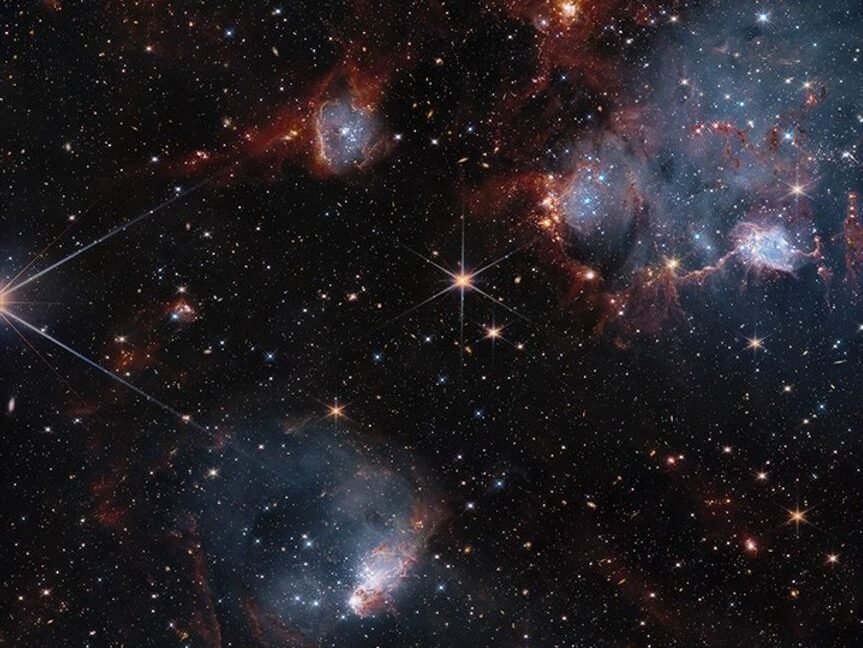
"Open clusters of stars, which consist of dozens up to a few thousand stars, are useful for studying the Universe because they formed more or less at the same time."
"Famous examples of open clusters include the Pleiades, located 444 light-years away, and more distant clusters such as NGC 460 and NGC 456."
"NASA shared side-by-side views of star clusters in visible light from the Hubble Space Telescope and infrared light from the James Webb Space Telescope."
"Hubble's image shows glowing gas that appears as bubbles, while Webb highlights dust filament structures, creating an impressive composite image."
Open clusters consist of dozens to a few thousand stars that formed around the same time. They provide valuable insights into stellar evolution by allowing comparisons of different stars of similar age. Notable examples include the Pleiades cluster, located 444 light-years away, as well as distant clusters like NGC 460 and NGC 456 found in the Small Magellanic Cloud. NASA has released composite images from the Hubble Space Telescope and the James Webb Space Telescope, showcasing impressive details of these clusters in both visible and infrared light.
Read at Ars Technica
Unable to calculate read time
Collection
[
|
...
]